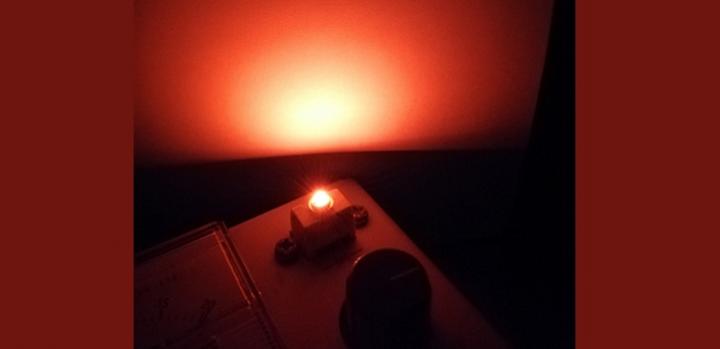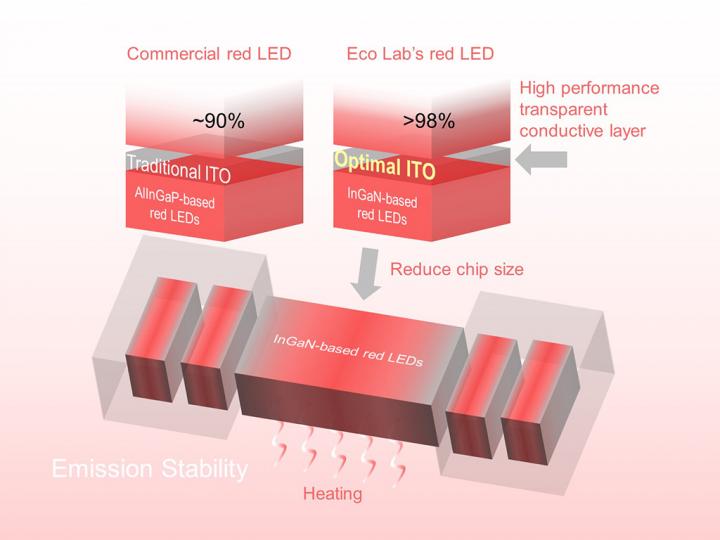Researchers of King Abdullah University of Science and Technology (KAUST) have been working on improve efficiency of red Micro LEDs and they recently announced the achievement of manufacturing stable red Micro LED based on InGaN.

(Image: KAUST)
A major challenge facing the development of Micro LEDs is to integrate red, green and blue light into a single LED chip. Current RGB LEDs are made by combining two kinds of materials with InGaP red LEDs and InGaN blue and green LEDs. "Creating RGB displays requires the mass transfer of the separate blue, green and red LEDs together," said KAUST researcher Zhe Zhuang. An easier solution would be to create different-colored LEDs all on a single semiconductor chip.
Since InGaP semiconductors are unable to emit blue or green light, the only solution to making monolithic RGB Micro LEDs is to use InGaN. This material has the potential to shift its emission from blue to green, yellow and red by introducing more indium into the mix. And InGaN red LEDs have been predicted to have better performance than the current InGaP ones.
Zhuang, Daisuke Iida, Kazuhiro Ohkawa and their colleagues have succeeded in growing high-quality indium-rich InGaN to fabricate red LEDs using the nanofabrication facilities at the KAUST Core Labs.
The team also developed excellent transparent electrical contacts using a thin film of indium-tin-oxide (ITO)1, which allows for a current to pass through their InGaN-based amber and red LEDs. "We have optimized the fabrication of the ITO film to realize low electrical resistance and high transmittance." The team demonstrated that these characteristics significantly improved the performance of InGaN red LEDs. They also carefully studied InGaN red LEDs of different sizes and at various temperatures. Changes in temperature affect the output light power and cause different color impressions, making them crucial for practical device performance.

(Image: KAUST)
"A critical disadvantage of InGaP red LEDs is that they are not stable when operated at high temperatures," explained Zhuang. "Therefore, we created InGaN red LEDs of different designs to realize very stable red-light InGaN sources at high temperatures." They have developed an InGaN red LED structure where the output power is more stable than that of InGaP red LEDs2. Also, its emission color shift at high temperatures was less than half of that of those made with InGaP.
Results of the research, titled “Effects of Size on the Electrical and Optical Properties of InGaN-based Red Light-emitting Diodes,” was published in Applied Physics Letters and was selected as the Editor’s Pick.
Related reading:
KAUST Scientists Develop First InGaN Red LED in High Power to Simply Micro LED Display Production
TrendForce/LEDinside has invested worldwide Micro LED technology experts to share more advanced technology progresses at the webinar, 2020 Micro LED Forum – Opportunities and Challenges for Mass Production of Emerging Display Technologies. Do not miss the chance to learn the latest updates of the next-gen display technologies and register now.















